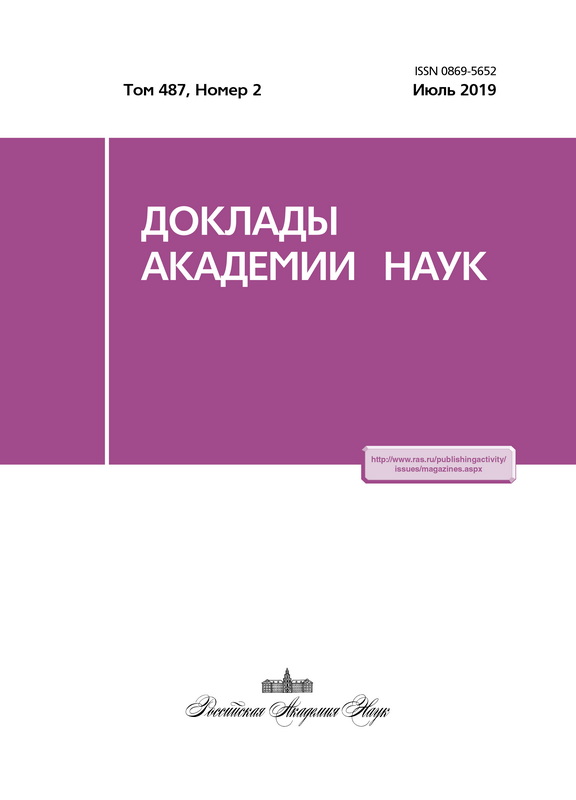Strong dependence of contact angle on pressure
- Authors: Rusanov A.I.1,2, Esipova N.E.1, Sobolev V.D.1
-
Affiliations:
- Frumkin Institute of Physical Chemistry and Electrochemistry Russian Academy of Sciences
- Saint-Petersburg State University
- Issue: Vol 487, No 2 (2019)
- Pages: 169-173
- Section: Physical chemistry
- URL: https://journals.eco-vector.com/0869-5652/article/view/15482
- DOI: https://doi.org/10.31857/S0869-56524872169-173
- ID: 15482
Cite item
Abstract
Although the usual pressures typically only slightly affect the properties of condensed phases and their surface layers, in physical chemistry of surfaces, it was found a quantity, the contact angle on the three-phase contact line, that is very sensitive to pressure. In experiments with an air bubble in water stuck to a solid surface, an increase in hydrostatic pressure of less than doubled gave an increase in the contact angle of more than 10º if the angle itself was sufficient but less than 90º. Сhanging the orientation of the liquid - gas surface. If the angle (no matter sharp or obtuse) is close to 90º, the mobility of the three-phase contact line arises as an alternative way to achieve equilibrium. To explain these phenomena, a thermodynamic theory is formulated. It is shown that with a fixed line of three-phase contact, an increase in pressure in a liquid always causes an increase in the contact angle. At the same time, an increase in the hydrostatic pressure of water by two times is equivalent to an increase in the partial pressure of water vapor inside the bubble by a factor of seven.
Keywords
About the authors
A. I. Rusanov
Frumkin Institute of Physical Chemistry and Electrochemistry Russian Academy of Sciences; Saint-Petersburg State University
Author for correspondence.
Email: airusanov@mail.ru
Academician of the Russian Academy of Sciences
Russian Federation, 31, Leninsky prospect, Moscow, 119071; 7/9, Universitetskaya embankment, Saint-Petersburg, 199034N. E. Esipova
Frumkin Institute of Physical Chemistry and Electrochemistry Russian Academy of Sciences
Email: nesipova@mail.ru
Russian Federation, 31, Leninsky prospect, Moscow, 119071
V. D. Sobolev
Frumkin Institute of Physical Chemistry and Electrochemistry Russian Academy of Sciences
Email: airusanov@mail.ru
Russian Federation, 31, Leninsky prospect, Moscow, 119071
References
- Русанов А. И. Фазовые равновесия и поверхностные явления. Л.: Химия, 1967.
- Rusanov A. I. Phasengleichgewichte und Grenzflächenerscheinungen. B.: Akademie-Verlag, 1978.
- Русанов А.И., Кочурова Н. Н., Хабаров В. Н. // ДАН. 1972. Т. 202. С. 304.
- Хабаров В. Н., Кочурова Н. Н., Русанов А. И. // Коллоид. журн. 1975. Т. 37. С. 92.
- Хабаров В. Н., Кочурова Н. Н., Русанов А. И. // Коллоид. журн. 1975. Т. 37. С. 407.
- Хабаров В. Н., Кочурова Н. Н., Русанов А. И. // Коллоид. журн. 1976. Т. 38. С. 120.
- Rusanov A. I. // Surf. Sci. Rept. 1996. V. 23. C. 173.
- Русанов А.И. // Коллоид. журн. 1998. Т. 60. С. 815.
- Дерягин Б. В., Чураев Н. В. Смачивающие пленки. М.: Наука, 1984.
- Русанов А. И. // Коллоид. журн. 1966. Т. 28. С. 718.
- Русанов А. И. // Коллоид. журн. 1967. Т. 29. С. 142.
- Русанов А. И. // Коллоид. журн. 1967. Т. 29. С. 149, 237.
- Eriksson J. C. // Surf. Sci. 1969. V. 14. P. 221.
- Rusanov A. I. // J. Colloid Interface Sci. 1978. V. 63. P. 330.
- Rusanov A. I. // Pure Appl. Chem. 1992. V. 64. P. 111.
Supplementary files







